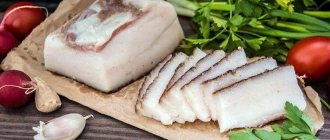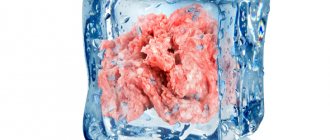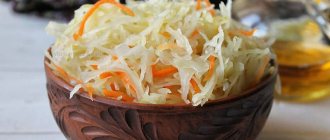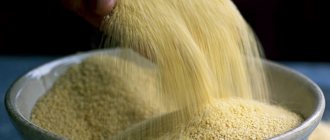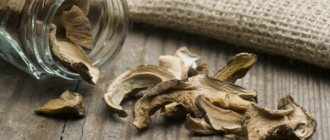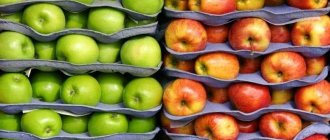Honey is considered one of the healthiest and most delicious foods. Thanks to it, you can maintain and improve immunity, saturating the body with important vitamins and microelements. The delicacy can be eaten or used in cosmetology and alternative medicine. But, like any other product, honey has its own storage characteristics and shelf life. Much depends on the container in which it is located, since if the rules for maintaining the product are followed, it is possible to preserve its healing properties for up to several years.
In ancient times, honey was stored in barrels made of natural wood. Now the material has been replaced with a more affordable one – food grade plastic.
How to choose the right honey storage container
To keep the “gift of bees” fresh and healthy for a long time, you need to choose a special container.
Clay pots or any other container are great for storing honey for a long time. A distinctive advantage is that it does not allow sunlight to enter, and prevents the penetration of third-party aromas and moisture. It is no coincidence that our ancestors chose and preferred clay utensils for these purposes.
- Plastic box
. Most manufacturers choose plastic only because it is lightweight and easy to transport. However, if it has an unpleasant odor, it is better to avoid using it at home. The container must be marked with special signs: PP, PP or “5”, which confirm their safety and stability. - Glass jars
are convenient and safe for storing fresh honey. The glass material itself does not react with the substances contained in them, and therefore does not emit unpleasant and dangerous substances and toxins. The only negative is the ability to transmit sunlight. A dark-colored container will do. The disadvantage of such dishes is fragility and high cost. - Wooden utensils
can influence the organoleptic properties, give it a truly excellent aroma, while preserving all the microelements and features. However, you need to take a close look at the choice of container. The best option is dishes made of birch, linden, and beech. You should not take containers made from wood species that emit essential oils (conifers, for example). - A metal container
is not a very suitable alternative. The thing is that the metal oxidizes over time, which negatively affects the properties, and after consumption, the health and well-being of people who can become poisoned. In this case, you need to choose the right metal utensils. An excellent option is containers that do not contain zinc, copper and lead.
Convenient, practical, but risky
The time for picnics is approaching, and in order to minimize household inconveniences, we stock up on plastic plates. Pour tea from a thermos or alcoholic drinks into plastic cups. Cheap, practical, but not safe.
Disposable plastic tableware costs pennies. But plastic is a delicate material. It cracks in the light. The heat melts. For strength, stabilizers are added to it. Plastic becomes stronger and... more toxic.
Polystyrene (denoted by the letters PS) is indifferent to cold liquids. But as soon as you pour a hot or alcoholic drink, the innocuous glass begins to release a toxic compound called styrene. Polystyrene plates are often used in summer cafes for barbecue. And the client, in addition to hot meat and ketchup, also receives a dose of toxins.
The Mystery of the Tin Can
Any polymer material ages under the influence of light, heat, heating and contact with all kinds of substances. Then it becomes cloudy, absorbs odors and ingredients from the contents and releases toxic substances. Food manufacturers indicate that shelf life applies not only to the product itself, but also to the packaging. This is most true for canned goods. For example, a toxic substance can be found in them - biphenol. Plastic film containing biphenol is used to line the inside of cans to prevent the metal from coming into contact with food. From here biphenol can pass into the contents. That's why:
- give up canned food in favor of fresh and frozen foods.
- transfer food from opened cans to glass ones, even if we are talking about short-term storage (under the influence of oxygen, the corrosion of cans increases sharply and the content of lead and tin in food begins to increase rapidly).
What to store
In nature, the best container for storing honey is a honeycomb. Bees securely seal frames with mature honey with wax. In this form it can be stored for a very long time without losing its beneficial properties. Beekeepers put the sealed frames away in boxes or empty hives, where the viscous amber liquid awaits its fate.
What to store
By purchasing honey in combs, the consumer is more likely to buy a natural beekeeping product. Wax honeycombs are not only a perfect vessel for honey, but also a very useful product that can be consumed along with the contents.
The honey in the combs is thoroughly chewed, spitting out the remaining wax. Natural wax helps strengthen tooth enamel, has an antimicrobial effect on the oral cavity and whitens teeth.
On a note! It is not advisable to keep honey in honeycombs at home. The wax shell does not prevent the absorption of odors, and if the wax seals are mechanically injured at room temperature, honey begins to flow. For preservation, it is better to seal comb honey in an airtight container.
Experts have different opinions regarding the material of the honey storage container. The palm was shared by:
- Ceramic dishes for storing honey.
- Glass jars.
- Food plastic containers.
- Wooden tueski.
Ceramic tableware
It has been used to store honey for thousands of years. A glazed clay pot is an ideal container for beekeeping products. The walls of the vessel do not allow sunlight to pass through, and the porous natural material maintains the required temperature and humidity inside. The only requirement is a tight fit of the lid, which is sealed with an elastic band or filled with wax.
Important! The disadvantage of ceramics is its high price, significant weight and fragility. Modern honey pots are designed not only for storing honey, but also for table decoration, as an original detail of the home interior.
Glass jars
A glass jar is the most common and frequently used container for packaging liquid honey. Glass does not react with biologically active honey mass. Honey can retain its beneficial properties in glass for a very long time, if the lid is securely sealed. The main disadvantage of glass is its fragility and weight. The transparent walls of the jar allow you to clearly see the product, but let the sun's rays through. Therefore, honey in glass is wrapped in paper or put away in a cabinet.
On a note
Particular attention should be paid to the lid. If a glass jar of honey is closed with a nylon or plastic lid, the shelf life is reduced and the product may lose its aroma.
Glass jars
Food plastic containers
Plastic is a cheap and convenient alternative to glass and ceramics. Required conditions:
- Labeling for food products (picture - glass and fork).
- Manufacturing material – polypropylene (markings: PP, PP, “5”).
It is desirable that the plastic container is opaque and not heated by sunlight or household appliances.
Interesting! How long honey can be stored at room temperature in a plastic container depends on the tightness of the lid and the location of the container. Experts do not recommend storing honey in plastic for more than 1 year.
Wood and birch bark
Since ancient times, honey was stored in birch bark tueskas and wooden barrels. Natural materials are well suited for storing medicinal products, but their cost is very high. In addition, wooden barrels and tubs made of “fragrant” conifers and oak (which gives a color tint) cannot be used as containers for honey.
Metal containers
Metal containers are not recommended for storing honey. The product contains active substances that react with metal. The acids contained in the honey mass corrode aluminum, copper and galvanized utensils, forming compounds hazardous to human health.
For your information. Metal utensils with an enamel coating and made of stainless steel are not dangerous.
Features of choice
There are several tricks and secrets on how not to be deceived. Try to buy honey where you can check the quality.
- Composition test. You need to scoop the sweetness into a spoon, lift it above the main mass and turn the spoon so that the honey drips from it. A real one will wrap in folds, like wrapping ribbon around a spoon. Drain - in an even, continuous stream, lying on top of the main mass in a slide. If honey flows easily from a spoon and dissolves in the total mass, it means there is a lot of liquid in it. There is a high probability that it is diluted with glucose syrup, water, or some other liquid, was artificially obtained, or is beginning to sour.
- Weight. Real honey is heavy: a liter weighs about 1.5 kg.
- Consistency. After collection, honey does not thicken for a month. If liquid honey is on sale in winter, it means it has been diluted or melted.
- Signs of fermentation. Honey should not foam. If you see obvious foam, the fermentation process has most likely begun.
- Foreign impurities. The presence of small pieces of wax or parts of bees in honey is not a 100% guarantee of naturalness, since unscrupulous sellers can add all this separately.
- Appearance. The product must be homogeneous. No delaminations are allowed.
Honey in combs is almost impossible to fake. At the same time, storing honey in honeycombs in an apartment is not difficult. The most suitable place is the refrigerator. Place the pieces in a container, close tightly and put them in a permanent storage place. If all conditions are fully met, you can keep it for several years. But remember: properties decrease by about 10% annually.
Freezing rules
In order for the berries to retain maximum nutrients, as well as an attractive appearance and taste, you should follow the basic rules of freezing:
- Only ripe berries without signs of spoilage or rotting are frozen. You cannot freeze overripe berries; they will not retain their integrity and will turn into a shapeless mass when defrosted.
- Before freezing, the berries are cleared of leaves and stems.
- For freezing, it is advisable to use fresh berries that were picked a few hours ago. The fresher the berries, the higher the likelihood of retaining most of the nutrients they contain.
- Berries can be frozen not only whole, but also in the form of puree. To do this, washed and dried berries are crushed using a blender, and granulated sugar is added if desired.
- You can freeze each type of berry separately, or make a mix of different types.
How to freeze each type of berry:
- Remove the stems from ripe but not overripe strawberries. Freeze each berry as a puree or separately. Strawberries keep well, sprinkled with granulated sugar (for 1 kg of strawberries you will need 150 grams of sugar).
- It is also advisable to sprinkle raspberries with sugar before freezing (for 1 kg of raspberries, take 300 grams of granulated sugar).
- Gooseberries, black and red currants, blackberries, blueberries should first be cleared of twigs and leaves. You can freeze it as a puree or separately as berries.
- Sweet cherries and sour cherries are frozen with pits, but the pits can be removed before freezing. Housewives often make cherry puree, which, after defrosting, is added to compotes, casseroles, and used as a filling for pies.
- The most unpretentious berry to freeze is cranberries. In villages, cranberries are stored in the fresh air until frost sets in. In urban conditions, the berries can be kept on the balcony, and then, after removing excess moisture, placed in the freezer. Even at low temperatures, cranberries retain all their beneficial substances and can be stored for quite a long time.
American scientists have proven that blueberries and blueberries are much healthier for the human body if used after defrosting. The fact is that beneficial antioxidants are found in the peel of the berries, which is practically not absorbed if you eat fresh berries. In defrosted berries, the peel becomes more tender, and a useful complex of vital substances penetrates the human body.
Which berries are best not to freeze:
- Strawberry. If you do not follow the freezing rules, the strawberries will turn into a heterogeneous mass after defrosting. If you want to freeze strawberries, it is better to grind them with sugar or sprinkle with granulated sugar.
- Watermelon. The giant berry, as you know, consists almost entirely of water, so the watermelon pulp is not frozen. Watermelon will completely lose its taste and aromatic qualities, and in addition, consuming frozen pulp will negatively affect the state of the digestive system.
- Exotic berries and fruits. Fruits brought from overseas countries contain a large amount of harmful substances that help preserve their appearance during transportation. During defrosting, harmful substances are activated and can cause significant harm to human health.
If you follow the basic rules of freezing and use suitable containers, in the autumn-winter period you can treat yourself and your family with healthy dishes with the addition of frozen berries and fruits. Do not deny yourself the pleasure of eating juicy berries when it is drizzling or snowing outside the window. Spend a little time freezing summer berries, because this does not require special knowledge or skills. And you will stock up on vitamins for many months to come!
Food grade plastic
Food grade plastic is the most popular and most controversial container. There are many rumors that it is strictly forbidden to buy and store honey in plastic, because “poisons and toxins” will penetrate into the honey or the honey will very quickly lose its beneficial properties.
In fact, packaging for honey, if it is made of food-grade plastic, is the most convenient and safe container. It will fully preserve the benefits and quality of honey for the entire allotted storage period and even longer.
The plastic jar in which honey is packaged must have a fork and spoon icon. This symbol means that this jar is suitable for packaging food products and complies with current legislation.
Next to the fork and spoon icon there is a number - the plastic recycling class. For food grade plastic, which is made of polypropylene, this is 5. Such jars can then be taken to a waste disposal point so as not to pollute the environment and can be reused.
Another advantage of plastic packaging is that it does not require washing before use. Neither legally nor in fact. Plastic jars are well stacked, packed into boxes at the packaging manufacturer, wrapped in several protective layers of cellophane and arrive at the honey packaging workshop in a perfectly sterile condition.
Due to this, there is a significant saving in working capital for the honey producer, which is reflected in its price, and also reduces the risk of “unwashed” containers.
The next advantage of food-grade plastic is the light weight of the jar. So, a plastic jar of 250 ml (350 grams of net honey) weighs 30 grams with a lid, and its glass “colleague” will weigh 150 grams.
The weight of a glass jar, as well as the need to wash it before use, usually increases the cost of honey by 30-40%.
What determines the shelf life of honey?
Temperature
The main thing when saving is to maintain a temperature regime in the range from +1 to +20 C, according to the DSTU standard, a maximum of +25 C. Different types of honey are preserved under different conditions:
| Honey variety | Optimal temperature | Storage | Peculiarities |
| Linden/Floral | from -5 to +20 | Refrigerator / Kitchen cabinet / Freezer | Does not lose properties and taste when frozen. Doesn't crystallize for a long time. After settling, it can be stored indoors up to +30 C. |
| Rapeseed | from 0 to +5 | Refrigerator cabinet | Sugars quickly. Keep it cold only. |
| In the honeycomb | -5 to + 5 | Refrigerator/freezer/cellar | Doesn't like temperature changes. |
| With royal jelly | from 0 to +5 | Refrigerator/cellar | The addition of royal jelly reduces the shelf life to 6 months. |
| With propolis | from 0 to +20 | Refrigerator/cellar/kitchen cabinet | Not afraid of temperature changes. Retains elasticity for a long time. |
| With pollen | from 0 to +20 | Refrigerator/cellar/kitchen cabinet | If the temperature is maintained, it can be stored for up to 5 years. |
| With beebread | from 0 to +20 | Kitchen cabinet/ Refrigerator | Bee bread mixed with honey can be stored for about 1 year and is undemanding to conditions. |
It should be remembered why nectar from the apiary should not be heated too much: this leads to the loss of vitamins and microelements. The product darkens and a bitter taste appears.
Humidity
High humidity in the room will inevitably lead to souring of the miracle delicacy. Less is better. Ideally, the humidity level during storage will be 40–75%. The worse the packaging, and the lower the temperature, the lower the ambient humidity should be.
Capacity
First of all, the container must be lightproof and hermetically sealed. Ideally stored in earthenware or dark glass jars, it is allowed in wooden tubs and barrels. Beekeeping elements absorb the smell of wood, so you should avoid containers made of coniferous materials. For short-term storage or transportation, you can use a plastic container or bottle. But such containers are not intended for long-term preservation, since they transmit harmful sun rays, over time react with the contents and begin to release toxic substances. And it is no longer safe to eat it.
Also, you should not leave sweets in a metal container for a long time, as the oxidation process occurs, and life-threatening oxides get into your favorite treat.
Tightness
As mentioned above, any container with beekeeping elements must be hermetically sealed. As a result of improper storage, honey separates and begins to ferment. To avoid this, carefully monitor the tightness of the container. It’s best to purchase a set of special jars with hermetically sealed lids.
Odors and dust
Honey easily absorbs flour and cement dust, the smell of smoke and any chemicals. You should keep sweets away from strong-smelling foods. Unless, of course, you want to give your favorite sweet the specific smell of pickles or sauerkraut, for example.
Lighting
Exposure to sunlight in this case is destructive: it leads to the loss of all beneficial and healing properties. If you leave the jar on the windowsill, then within a day your healthy sweetness will turn into liquid sugar.
Sugaring and other common problems and how to fix them
Natural honey thickens and crystallizes soon after pumping. This may take several weeks; refrigeration speeds up the sugaring process.
If you have no desire to eat candied honey, you can melt it, but this must be done with extreme caution. You can’t heat sweets above 40 degrees
You can leave the candied mass in a bathhouse or oven preheated to 35 degrees. After 4-5 hours, well-infused honey will become liquid. It is not worth warming the sweetness for a long time, because... under such conditions, the beneficial properties will disappear every hour.
Sometimes some housewives notice that the purchased honey suddenly splits into two parts. If the mass is thick at the bottom and liquid at the top, this indicates that the honey is immature. It may have been mixed with water before being sold. This product is absolutely safe and retains all its beneficial properties.
It’s another matter when the purchased product, no matter how long it lasts, is not candied. Honey, which has a caramel smell, was exposed to heat - simply melted. A product that does not thicken for a long time may be a fake, including various preservatives and taste improvers. The exception is acacia honey - its crystallization process takes 2 years.
Another problem that housewives may encounter is the appearance of white foam on the product. This indicates the beginning of the fermentation process. Perhaps the honey was collected earlier than expected and contains a lot of moisture (more than 18%). To prevent honey from spoiling, it must be heated in a steam bath. Heating will kill the yeast cells, but this will reduce the quality of the honey.
Shelf life of honey in the refrigerator
It is not possible to indicate the exact period during which honey at home can be kept in the refrigerator without affecting its quality. This is due to the fact that the exact period of time a product retains its original properties is determined by the following factors:
- humidity indicator;
- type of honey;
- temperature conditions.
There are several rules, if followed, it is possible to extend the shelf life and preserve the maximum beneficial properties of honey. Basic recommendations, if followed, the product can be well stored in the refrigerator for a long time:
- Temperature changes negatively affect the quality, so it is not advisable to frequently remove the jar from the refrigerator.
- When a significant volume of product is stored, it is necessary to pour it into small containers, which will not only avoid taking out the main volume from the refrigerator each time, but also keep it in a liquid state longer.
- It is recommended to keep honey in tightly closed jars or other containers - this will preserve the taste characteristics and prevent the product from absorbing foreign flavors and odors.
Following these recommendations allows you to extend the storage period and at the same time help preserve viscosity, preventing the premature appearance of a white layer on the surface. Following these rules does not allow honey to lose its beneficial properties.
Useful properties of honey
The recognized advantages of honey include the following properties:
- Sedatives. People suffering from sleep disorders are recommended to drink tea with a spoonful of honey at night, not at all with the aim of distracting from gloomy thoughts - it is a natural sedative and sleeping pill. Soon the person calmly falls asleep.
- Fighting viruses. The tradition of giving milk or radish juice and honey to children who have caught a cold did not arise because there was supposedly nothing else available for treatment at home before. Honey actively fights viruses and bacteria and the patient feels better the very next day.
- Anti-inflammatory agent.
- Fighting fever - if the temperature is not too high (up to 39 degrees), you can not bring it down with medications, but drink raspberry infusion with honey. It’s another matter if the thermometer rises higher - then you’ll have to take a stronger remedy or call a doctor.
- Breakdown of fats - when restructuring the diet for the sake of a slim figure, sugar is replaced with honey, despite the high kilocalorie rate.
- Source of energy - the ability of honey to give strength and vigor was known to ancient Greek athletes.
- Youth elixir. Honey is good to consume internally and use as part of homemade masks for cosmetic procedures.
However, the product is not suitable for people with:
- Individual intolerance;
- Severe chronic diseases of the gastrointestinal tract;
- Diabetes mellitus;
- Severe metabolic disorders.
Important: people diagnosed with type II diabetes are allowed honey, but strictly under the supervision of a doctor.
Can alcohol be stored in plastic containers for a long time?
I will say unequivocally - it is impossible. I will explain my point of view using a life example. This was back in the wonderful Soviet times: when breadfruit trees grew along the outskirts of the roads, and alcohol was issued with coupons. I then worked as an artist in a cultural center and, as a creative person, loved to get drunk. And somehow, on New Year’s Eve, our deputy director mixed up a ten-liter plastic canister of alcohol and called me to brag about his luck. So that’s why I’m telling all this - in two days the alcohol from that canister disappeared. There wasn’t even anything to get over the hangover with. By the way, it also evaporates from two hundred liter iron barrels, although not so quickly - it’s been tested.
It seems like alcohol producing factories claim that it is possible if it is bottled from them. There is large quantities of beer in plastic, I even bought vodka in Germany in a plastic bottle (Smirnovskaya). And the distillery is not far away; they often carry alcohol in plastic canisters. I won’t say anything about the release of harmful substances; these disputes will continue for a long time. But still, if there is talk, then it makes sense to think about it.
The period for which vodka can be stored in a glass bottle is virtually unlimited. But this condition applies exclusively to vodka without additional components. In particular, the shelf life of any vodka tincture usually does not exceed one year, and to guarantee the preservation of taste - no more than six months.
How to store honey: plastic, glass, wooden barrels?
What container should you store honey in: plastic, glass, wooden barrels?
Previously, glass containers were mainly used to store honey. Manufacturers and sellers poured it into glass from an aluminum flask, often right in front of customers, on the street, and no one was embarrassed.
Today, the honey market offers several packaging options, and now we will look at each of them in detail.
Food grade plastic
Food grade plastic is the most popular and most controversial container. There are many rumors that it is strictly forbidden to buy and store honey in plastic, because “poisons and toxins” will penetrate into the honey or the honey will very quickly lose its beneficial properties.
In fact, packaging for honey, if it is made of food-grade plastic, is the most convenient and safe container. It will fully preserve the benefits and quality of honey for the entire allotted storage period and even longer.
The plastic jar in which honey is packaged must have a fork and spoon icon. This symbol means that this jar is suitable for packaging food products and complies with current legislation.
Next to the fork and spoon icon there is a number - the plastic recycling class. For food grade plastic, which is made of polypropylene, this is 5. Such jars can then be taken to a waste disposal point so as not to pollute the environment and can be reused.
Another advantage of plastic packaging is that it does not require washing before use. Neither legally nor in fact. Plastic jars are well stacked, packed into boxes at the packaging manufacturer, wrapped in several protective layers of cellophane and arrive at the honey packaging workshop in a perfectly sterile condition.
Due to this, there is a significant saving in working capital for the honey producer, which is reflected in its price, and also reduces the risk of “unwashed” containers.
The next advantage of food-grade plastic is the light weight of the jar. So, a plastic jar of 250 ml (350 grams of net honey) weighs 30 grams with a lid, and its glass “colleague” will weigh 150 grams.
The weight of a glass jar, as well as the need to wash it before use, usually increases the cost of honey by 30-40%.
Glass
A glass jar, in some cases, has its advantages. So glass, especially dark glass, does not transmit ultraviolet rays. In production conditions and on the store shelf, this advantage, of course, is not significant, but if you buy honey pre-packaged by a beekeeper or seller in the open air - in a tent without an awning near the metro or on hiking trails, then you should make a choice in favor of glass.
In a store environment, honey does not need additional protection from ultraviolet radiation and buying it in dark glass or frosted plastic does not make sense. On the contrary, it is better to see the product in person. Although, it is more pleasant to give honey as a gift in a transparent glass jar; it favorably sets off the color of the honey and has a fascinating shine.
Wooden barrels or natural wax containers
Legal requirements also apply to these types of packaging - the inside of the barrel must be covered with a material suitable for contact with food. For honey, the more inert and airtight the packaging, the better.
Containers made entirely of wood or wax cannot meet these conditions. Therefore, if you were given honey in such a container, and you are not going to eat it in a week or two, then it is better to transfer the honey to a plastic container or glass jar with an airtight lid.
Here are some more tips:
- Honey should be stored in a tightly closed jar, in a place protected from direct sunlight, at a temperature not exceeding + 20 °C.
- If you eat honey every day, then you can keep the bucket on the table, covering the product with a lid.
- The concepts of “storing honey” and “containing during active consumption of honey” should be distinguished. It is better to store honey in an airtight container (plastic or glass), and the vase or pot from which you eat honey can be clay with glaze, or a crystal vase with a not entirely airtight lid.
- You can store honey in enamel and tin containers only if it is suitable for storing and processing food products.
- If you are going on vacation in the summer, we recommend putting honey in the refrigerator. At temperatures from +2 to + 8 °C, honey is stored better than at +25 °C and above and does not flake.
We thank the Private Apiary of Yuri Kholtobin for the information provided and assistance in writing the article. In the next article, you will learn how to eat honey correctly, whether you need to adhere to the regime, why you should drink water with honey on an empty stomach, and whether you can put honey in hot tea.
Freezing berries for the winter in plastic bottles
Of course, the most common way of preparing berries for the winter is jam and compotes, and all of this is of course delicious, but not for everyone, I prefer to freeze the berries, and then, if necessary, cook compotes or preserves from these berries, use them in baking, yes and just like that - defrost and enjoy.
Many who have tried to freeze berries have noted that over time the taste of such berries deteriorates, but there is a way out. Firstly, use plastic food containers or plastic bottles instead of plastic bags, and secondly, sprinkle the berries with sugar before freezing. Absolutely any berries are suitable for freezing in this way, the only problem being some cherries. which I plan to use in the future for baking, I remove the seeds in advance. In addition, you can freeze assorted berries this way.
Preparing berries for freezing.
The berries are thoroughly washed, the stalks are removed, only high-quality berries without spoilage are selected, then the selected berries are placed on a wire rack to give it time to dry from the water.
Preparing containers for freezing.
If you are using new food grade plastic containers or bottles, simply rinse them with baking soda and let them dry thoroughly.
If these are plastic bottles that previously contained juice or milk, then pay special attention to washing, especially if the bottles contained a dairy product. By the way, it’s not in vain that it was said about the dairy product - bottles for milk and fermented milk products have a wide neck and are much more convenient to use. Next is the process itself
Next is the process itself.
After the berry has dried, take a little berry, lightly sprinkle with sugar (to taste), mix and place in a bottle or plastic container, repeat the process until the container is full, you can use a wide-necked funnel to fill the bottle, We close it and put it in the freezer, I prefer to use bottles, since such a container closes more hermetically and the berries do not lose their taste and quality until the next harvest.
Why do we process the berries in small portions? - Everything is simple here, if there are a lot of berries and they are tender, such as raspberries, strawberries, then when mixing they can be mashed.
When the honey became sugary
Sugaring is a natural process and an indicator of quality. Crystallization does not change the nutritional and medicinal qualities of the product. The crystals can be of different sizes and inevitably appear 3-6 months after being removed from the honeycomb. Crystallization occurs due to the chemical composition of the product, the main components of which are glucose and fructose. The more glucose in honey, the faster it will sugar. For example, sunflower may begin to form crystals while still in the comb. Uneven crystallization is considered normal. High fructose honeys, such as chestnut or sage, do not crystallize as quickly as other honeys. Acacia can remain in a liquid state for the longest time.
Additional Information. Glucose in the product may produce a white film or spots of varying sizes on the surface, which is a good sign of natural ripe honey.
When layering a beekeeping product, an important factor is that its upper liquid part is not too watery, which may indicate a violation of pumping deadlines and poor quality of the product. Also, the reason when honey remains in a liquid state for more than six months may be that the heating temperature was exceeded during dissolution for packaging. There are no vitamins or medicinal microelements left in such a product.
The quality of the sweetness can be checked by dissolving the mass in water: the natural product completely dissolves within 10 minutes, leaving a cloudy yellowish solution.
To restore the fluidity of the candied product, melt a separate portion in a steam bath
If you want to restore the fluidity of the candied product, you should melt a separate portion in a steam bath. You should not melt the mixture over an open fire or allow it to boil, otherwise the honey will turn into a carbohydrate that has no medicinal properties. There is no need to melt large quantities for subsequent storage purposes; a heat-treated product is stored worse and loses its beneficial qualities faster.
Bee venom vaccines
Bee venom can suppress tumor progression and activate the immune system by combining the secretory phospholipase A2 in BV with compounds including phosphatidylinositol (3,4)-bisphosphate or dendritic cells (DCs). DCs treated with bee venom in vivo exhibit anticancer and antiviral properties. DCs in combination with tumor or viral antigens can produce class I and class II major histocompatibility complex peptide epitopes on CD8 and CD4 T lymphocytes, leading to a series of immune responses in response to the antigens. Phospholipase A2 BV (bvPLA2-H34Q) is membrane bound and binds antigens within the cell membrane of human DCs in vivo. This induces recognition and activation of CD8 T cells, implying that antiviral and antitumor vaccines can be derived from bee venom (DC vaccine).
Bee venom and DC vaccines (cellular antiviral/antitumor vaccines) are used for immunization against viruses such as cytomegalovirus and for tumor suppression. Bee venom can be used as a potent adjuvant-enhanced antimicrobial and antitumor vaccine and shows potential in melittin-containing vaccines. sPLA2 and phosphatidylinositol (3,4)-bisphosphate are effective adjuvants (leishmania vaccines, antitumor and anticytomegalovirus vaccines).
The leading adjuvant therapy for SARS-CoV-2 currently being promoted is aluminum hydroxide due to its slow release and increased interaction with antigen-presenting cells.
Bee venom is a candidate for combating SARS-CoV-2 infections and may provide benefits against COVID-19. PLA2 has been associated with the level of success in controlling SARS-CoV-2 infections. Conjugation of bee venom peptides may offer a new approach to developing a bee venom vaccine.
What determines the shelf life of vodka?
The shelf life of vodka, like any product, depends on certain conditions:
- from the composition;
- on storage and transportation conditions;
- from container.
Composition of the drink
When discussing the shelf life of vodka, you need to know its classification.
According to its composition, “white” is divided into simple and special:
- A simple
alcoholic drink is prepared from ethyl alcohol and specially prepared water (spring or purified). Some manufacturers add it to certain brands of product. This vodka is harder to drink, has a pronounced smell of alcohol, but lasts longer if it contains high-quality ingredients.
Vodka with the addition of components of plant origin: herbs, fruits, berries is called special This is done to give the drink softness and drown out the harsh “aroma”. Over time, the fillers enter into an oxidation reaction with alcohol, which renders the vodka unusable. This product must be used within six months, maximum 12 months from the date of manufacture.
High-quality vodka has a mild taste and a sweetish aftertaste; bitterness is unacceptable
Storage and transportation conditions
- keep indoors without exposure to sunlight;
- maintain storage temperature from -15 to +30 degrees;
- maintain indoor humidity at 85%;
- monitor the integrity and tightness of the packaging.
The shelf life of vodka directly depends on the conditions of transportation of the alcoholic beverage.
- Vodka, like any alcohol-containing liquid, does not tolerate temperature changes, so it is not transported in hot or cold weather. The optimal temperature is considered to be 11-12 degrees Celsius.
- If the journey takes several days, the cargo is placed in refrigerators or insulated vans.
- Enclosed transport is used to prevent sunlight from entering.
- To maintain the integrity of the packaging, care is taken to firmly strengthen the products.
Storage containers
If you pay attention to the containers in which the “transparent tear” is placed on store shelves, you can conclude that the most suitable for it are glass bottles of various capacities. And it is right. Do you know that…
Do you know that…
Alcohol is a chemical substance. It enters into an oxidation reaction with both vegetable fillers and containers.
There is often a debate among consumers about whether vodka can be stored in a plastic bottle.
- Ethyl alcohol actively interacts with this polymer, releasing toxic substances into the solution. When they enter the human body, they cause severe poisoning.
- For the same reason, you should not pour “white” into crystal or ceramic decanters, even for a short time.
Glass is least susceptible to change from exposure to alcoholic beverages
Tip of the day
The effect of bee venom on the body
Bee venom therapy dates back to the era of Hippocrates, where it was used to relieve joint pain and arthritis. In modern medicine, bee venom is used to treat multiple sclerosis, arthritis and Parkinson's disease. The activity is based on the positive effects of the anaphylactic reaction on metabolism and organelles, especially the respiratory system. Bee venom demonstrates effectiveness against HIV , and its effectiveness against H1N1 provides hope for additional therapy for protection against SARS-CoV-2. Allergens may help fight COVID-19. Bee venom can cause an increase in specific IgE and IgG antibodies and leads to the production of IgE antibodies that can react to various antigens. Although IgE is responsible for allergy outbreaks, it also plays a protective role against a wide range of allergens.
Bee venom can act as an adjuvant in combination with Toll-like receptor (TLR) ligands and modulate the immune system, enhance the differentiation of foxP3-expressing cells and increase circulating regulatory T cells. Bee venom causes an increase in CD25, CD4+ T cells, and foxP3 mRNA, resulting in a shift in the bee venom-specific IgG4/IgE ratio.
Bee venom regulates the immune response and physiopathological changes and supports clinical observations in apitherapy, where immunity against COVID-19 was shown by beekeepers in Wuhan Province, People's Republic of China.
Phospholipase A2 (PLA2) bee venom can trigger mast cell maturation, plays an important role in cell signaling and for the production of key lipids, and can act as a receptor ligand. PLA2 can inhibit the flow of inflammatory cells to targets.
Bee venom can lead to long-term induced tolerance to related allergens, such as the function of reducing IgG4 levels and activating IL-10, modulating the immune system and inducing TH2 to TH1 bias.
Melittin (APi M 1) can be used to create mimotopes. The bee venom component APi M 10 (icarapine) activates effector cells in patients with bee venom allergy. Since IgE has an epitope for APi M 10, this may provide an opportunity for adjuvant development. Bee venom antigens can be used as adjuvants for pain relief, and the effect of melittin on the formation of cell membrane pores, leading to apoptosis, serves to enhance adjuvant properties.
Bee venom also has antiviral properties. Bee venom can desensitize mast cells and basophils and suppress innate lymphoid cells. Bee venom components can inhibit protein synthesis, induce angiogenesis, and activate caspase-3-8-9.
Let's summarize
Storing honey is a responsible matter. Therefore, you should not treat it with disdain. Otherwise, the product can deteriorate in a record short period of time, and its further use will cause irreparable harm to the body. Based on all of the above, we can identify the main criteria that must be taken into account when storing the product.
Temperature
It is very important to store the product at the optimal temperature. Otherwise, it will begin to deteriorate and delaminate, losing its beneficial properties.
It should be noted that vitamins will evaporate instantly if the product is heated to +40 degrees. Too low a temperature causes hardening. Dishes. Can honey be stored in plastic containers? It's possible, but not for too long. However, the best option is a clay pot or glass jar. Do not place treats in iron or galvanized containers under any circumstances, so as not to spoil them. Humidity. The lower this indicator is, the better for the product. This circumstance is due to the fact that honey absorbs moisture at a rapid pace. To prevent this from happening, the storage container must be airtight. Light and smell. As already mentioned, direct sunlight kills the product. Therefore, you cannot store it on windowsills. It is best to place honey in a dark place where there are no chemicals or seasonings. There should be no other strong-smelling substances near the treat. Even the most airtight container is not able to completely protect honey from foreign odors.
The body's response to bee venom
Bee venom therapy may alleviate immune diseases. Bee venom secretory phospholipase A2 exhibits in vitro and in vivo activity in the immune system and is used to treat asthma, Parkinson's disease, and drug-induced organ inflammation. Immune reactions to bee venom can be dangerous when highly elevated, but when controlled, allergic immunity can be beneficial in human defense to stimulate type 2 immune responses. Type 2 immunity is mainly based on barrier defense, and these responses are initiated by T helper type 2 (TH2), immunoglobulins E and G1 (IgE and IgG1), antibodies and other components of the innate immune system (epithelial barriers, innate lymphoid) cells - ILC , eosinophils, mast cells, basophils and activated macrophages). The innate immune system senses venom components, inducing a protective immune response against antigens through pattern recognition receptors (PROs), such as Toll-like receptors found on pathogen-associated molecular patterns (PAMPs).
The anti-inflammatory properties of bee venom can suppress the activity of inflammatory antigens, reduce the number of infiltrated inflammatory cells, and suppress the expression of (TNF)-α, IL-1β, Toll-like receptor (TLR) 2, and CD14 expression. , inhibiting the binding activity of nuclear factor-κB (NF-κB) and activator protein (AP)-1. The major allergen of Bet V 1, PLA2, stimulates the innate immune system by binding to PRRs, such as Toll-like receptors, which recognize PAMPs, inducing a type 2 immune response. PLA2 in BV induces T helper 2 (Th2) cell type responses and group 2 innate lymphoid cell (ILC2) activation through enzymatic degradation of membrane phospholipids and secretion of IL-33. PLA2 induces IgE production, protecting against future allergic/immunological reactions in the event of a lethal dose of bee venom; PLA2 plays a critical role in human defense by enhancing Th2 differentiation, ILC2 activation, immunoglobulin production, membrane remodeling, and anti-inflammatory responses.


